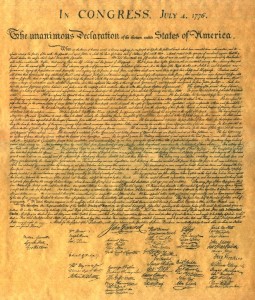 I’m having a hard time making up my mind whether cursive handwriting is an essential life skill that ought to be taught in school or whether nostalgia for the “Good Old Days” is the only reason it’s still around. My column from last week, “Cursive Challenge,” generated so much comment that I couldn’t help but do a follow-up. What I discovered in my research was eye-opening.
I’m having a hard time making up my mind whether cursive handwriting is an essential life skill that ought to be taught in school or whether nostalgia for the “Good Old Days” is the only reason it’s still around. My column from last week, “Cursive Challenge,” generated so much comment that I couldn’t help but do a follow-up. What I discovered in my research was eye-opening.
Countless educational and psychological experts contend that there are compelling reasons to teach cursive handwriting to elementary school-aged children and, in the case of Montessori schools, even to preschoolers. Among their arguments:
- Cursive stimulates the creation of synapses and the development of synchronicity between the left and right hemispheres of the brain.
- It helps develop and perfect fine motor skills.
- It is more efficient and less tiring than printing.
- It encourages creative thinking.
- It helps learning-disabled students to keep from “getting lost” while writing a word.
- It has an aesthetic beauty that makes it an art form all its own.
- It stimulates the “John Boy Walton Syndrome,” encouraging children to curl up with pen and notebook and write their hearts out.
- It connects children to the generations ahead of them; without the ability to comprehend cursive, they won’t be able to read historical documents in their original form or—and perhaps worse—cards and letters written by their ancestors.
But there are also strong arguments in favor of letting cursive go the way of the one-room school house with an inkwell in the corner of every desk. Opponents contend that cursive often forces children to pay so much attention to the formation of their letters and words that they lose sight of the content of what they’re writing. Writing in cursive doesn’t give students a glimpse of how their writing will look on the printed page, or give them the option of making instant edits as does composing at a keyboard.
One of the biggest arguments against mandating cursive is that it takes away time from other subjects that need to be taught during the school day. Which is more important—cursive or math? Cursive or reading? Cursive or social studies? Cursive or science? Should precious time given to P.E. or art or music be sacrificed to learn cursive?
Tough questions.
The Tennessee state legislature and Governor Haslam have answered them, at least for now. Beginning with the 2015-2016 school year, the teaching of cursive is mandated from second through fourth grade. Legible cursive penmanship will be required of third graders. Whether this law is a knee-jerk reaction to the controversial Common Core requirements, which don’t include cursive handwriting, or whether it was passed because our lawmakers believe it to be educationally sound, is anybody’s guess.
But, for the time being, we can rest easy knowing that our kids will be able to read the Declaration of Independence in Thomas Jefferson’s own handwriting. Or the love letters their grandparents wrote to one another when there was no such thing as a text message.
(April 19, 2015)